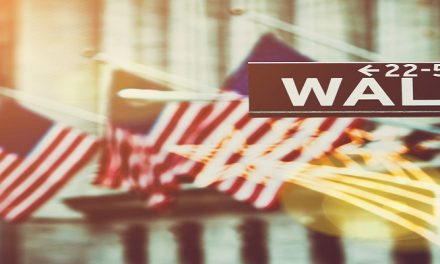After the recent stock market sell-off, the gap between Main Street and Wall Street has never been more exposed than now.
The pundits on the cable channels are screaming for interest rate relief from Jay Powell’s Federal Reserve.
And regular folks’ reaction to the market carnage? Meh.
For instance, the University of Michigan’s November survey of consumer sentiment found that people in the bottom third of income distribution saw a 10.4% jump in confidence that month.
The only explanation is that there are still broad “positives” in the economy. For example:
- November’s unemployment rate remains pegged at a 50-year low of 3.7%.
- Bloomberg noted last week that the latest U.S. retail sales figures are “poised to drive another quarter of strong growth” for the economy.
- Average hourly wage growth is up 3.1% for the second month in a row. It also happens to be the largest one-month rise since 2009.

Yet among the Wall Street set, you’d think economic Armageddon was already here.
The latest Bank of America Merrill Lynch Global Fund Manager survey showed the largest one-month rotation from stocks into bonds ever, and the worst outlook since 2008.
So, who’s right? And who’s wrong?
Beware of the Money Crowd
My money’s on regular Americans — and in 2019, an eventual upturn in the markets.
For one, whenever there’s a majority of opinion about anything on Wall Street, it usually means the money crowd is wrong, wrong, wrong.
Wall Street strategists point to evidence of slowing home sales in November.
But as the real-estate experts at Redfin noted, the decline — at the fastest rate in two years — came as the number of homes listed for sale rose at the fastest rate in three years.
Translation: Asking prices got too high and buyers pulled back.
Oil prices cratered in the last few months, sure.
But what do you expect when buyers were led to believe that new sanctions would remove millions of barrels’ worth of Iranian oil off the world market. And then we were told “never mind” at the last moment by the U.S.
With the pressure off, people unloaded the commodity.
This Old Fear Won’t Stop Stocks
As for Wall Street’s worries over slowing profit growth among S&P 500 companies, the fear is hardly a new one.
Analysts and strategists have been talking about the prospect of “poor comparisons” between the first half of 2018 and the coming first half of 2019, since Congress approved the Tax Cuts and Jobs Act of 2017.
The point isn’t that there’s nothing to fear, that stocks can’t be overpriced or that worries over future events (such as more Fed interest-rate hikes in 2019) shouldn’t be “priced into” the stock market.
But as we often see, Wall Street tends to exaggerate between extremes of optimism and pessimism.
The wiser (and more profitable) choice is somewhere in between.
Regards,

Jeff Yastine
Editor, Total Wealth Insider










